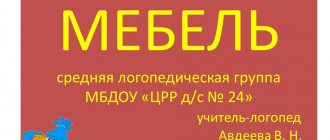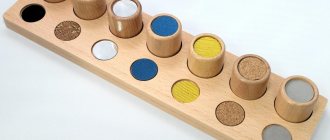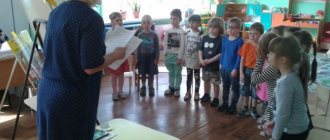Fun ABC lesson
This group of games helps children learn a lot of new things from the life of words, expand their vocabulary, and knowledge about language.
Ball game "Say the opposite."
Winter summer. Heat - cold. True False. Rich man - poor man. Bitter - sweet. Useful - harmful...
"The Magic Wand of the Fairy Slovarina"
To play you need a “magic” wand. One end of the stick decreases, and the other increases.
An adult player names a word, then touches one of the children with a stick. The child calls this word either diminutive or increasing, depending on the end of the stick with which the child was touched.
House - house - house. Bridge - bridge - bridge. Rain - rain - rain. Cat - cat - cat...
Author: Krugovykh Margarita Aleksandrovna
Senior teacher of MADOU d/s No. 7 in Ishim
Everyone knows what an important function breathing performs in the life of the human body. In addition to its main physiological function - gas exchange - breathing also provides such a function as speech breathing. Speech breathing (diaphragmatic) is the basis of sounding speech, the source of the formation of sounds and voices.
The mechanism of this type of breathing is inherent in us from the very beginning. This is the oldest type of breathing, inherent in all warm-blooded animals and 90% of the total need for breathing is carried out due to it.
The main muscle that powers this type of breathing is the diaphragm . It separates the abdominal and thoracic cavities. When you inhale, the diaphragm relaxes and, falling, presses on the abdominal organs, which in turn are pressed against the abdominal wall, causing it to protrude and round. As you exhale, the diaphragm contracts, compresses the lungs, and the abdominal wall retracts. In this case, the upper part of the chest remains motionless. Outwardly, it looks like belly breathing.
When correcting speech disorders, there is a need to specially organize and develop speech breathing; breathing exercises become of particular importance. The corresponding gymnastics is aimed at developing in children the skills of correct rational breathing and voluntary control of the process of air flow movement.
Pronunciation of complex sounds
Articulation develops gradually; children usually master the pronunciation of complex sounds last. Often in speech the child replaces them with simpler ones or does not pronounce them at all.
Sound "R"
Experts advise studying this difficult sound in a child at the age of 5. If the baby pronounces “r”, but incorrectly, then even earlier - then it’s more difficult to relearn.
To help:
- Tongue twisters with “r” (“Karl stole corals from Clara, and Clara stole Karl’s clarinet.”
- Imitation (just say “r” in your speech in front of the child as clearly and cleanly as possible).
- Production from other sounds that the child pronounces correctly. For example, when a child pronounces “zh”, carefully move the tongue deeper into the mouth with a stick - a “r” is formed. Strengthen the sound by repeating the exercise several times. Or the baby says “z”, lightly touching the alveoli with his tongue, and blows heavily on the tongue. The sound "r" is heard.
- Three-stage exercise: the tongue is “sucked” to the hard palate, the child takes a deep breath through the nose and a short exhale through the mouth, connecting the voice.
- Setting up mechanically (carried out only by a speech therapist - with a hammer, spatula).
Sound "Sh"
The production of this sound occurs at 3–5 years of age.
The most commonly used way is through “s”. The child raises his tongue to the sky, pronounces “s” and smoothly exhales air to make “sh”. Before directly placing the “w,” experts recommend developing articulation of the lips and tongue with the help of exercises:
- A wide smile, exposing both rows of teeth, for 5-7 seconds.
- Licking lips with a “wide tongue” from top to bottom.
- Curling the wide tip of the tongue towards the nose.
- The child stretches out his lips with a straw and blows on a cotton ball for a long time, pushing it, for example, into the corner of the table.
- The baby blows through his closed lips onto a strip of paper - stronger, weaker, stronger again.







